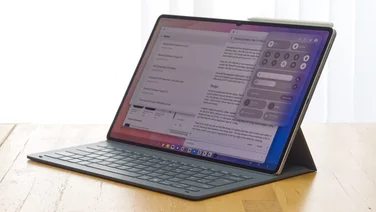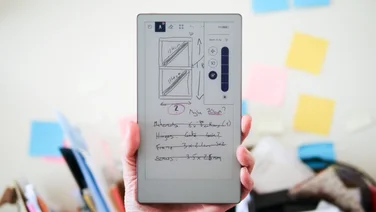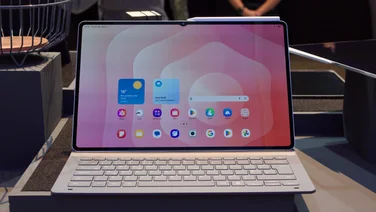To help us provide you with free impartial advice, we may earn a commission if you buy through links on our site. Learn more
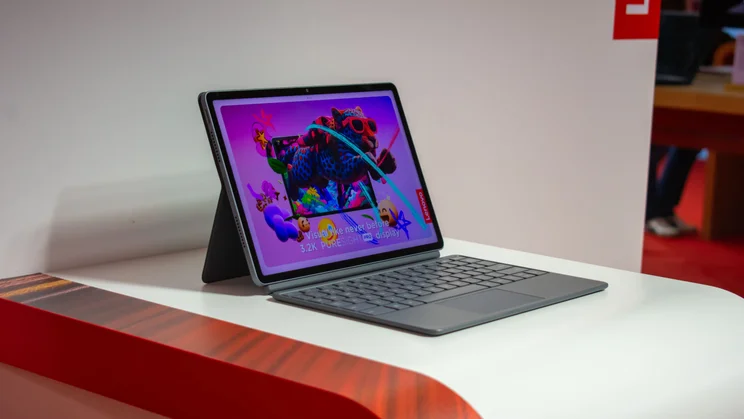
We’ve already seen a lot of interesting new releases at IFA 2025, and now we’re turning our attention to tablets, with the Lenovo Yoga Pad and Idea Tab Plus.
These two new tablets cater to differing and specific audiences, with the Yoga offering a sharp, smooth display and powerful hardware for creatives to harness, and the Idea Tab Plus targeting a more practical market with its larger display, bigger battery and lower starting price.
I’m a sucker for a tablet with decent digital art credentials, so let’s start with the Yoga.
Lenovo Yoga Pad hands-on: Design, key features and first impressions
Just as you’d want in a portable creativity device, the Yoga Pad is decently compact and wonderfully light: the unibody aluminium design measures 278 x 6.3 x 181mm (WDH) and weighs just 458g, which is comfortably among some of the lightest 11in tablets that I’ve tested.
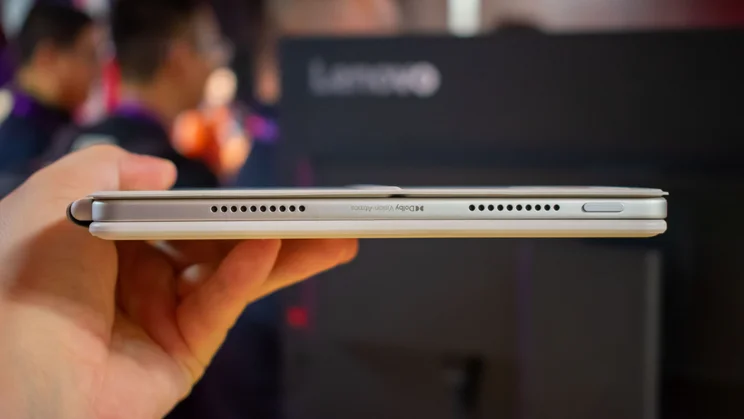
That 11in refers to the measurement of the screen across the diagonal (11.1in, to be precise), so it’s not the biggest display you can get. But, for its size, it’s impressively pixel-dense. The resolution of 3,200 x 2,000 is gloriously sharp, perfect for honing in on the finest details of your intricate masterpieces.
In addition to the sharpness, the screen has a 144Hz refresh rate, 800 nits peak brightness and can apparently reproduce 98% of the DCI-P3 colour gamut.
Inside, we’ve got the Snapdragon 8 Gen 3, paired with up to 12GB of RAM and up to 256GB of storage (to me, that implies two variants, with a cheaper option having 8GB of RAM and 128GB of storage).
The SoC also features a 20 TOPS NPU, enabling the Yoga Pad to offer AI that will apparently learn your behaviours and suggest next actions based on your history, similar to the Moto AI we saw on the Razr 60 series. To make full use of that 3.2K screen, the AI also upscales images on the display with the SuperRes feature, ensuring all of your creations look pin-sharp.
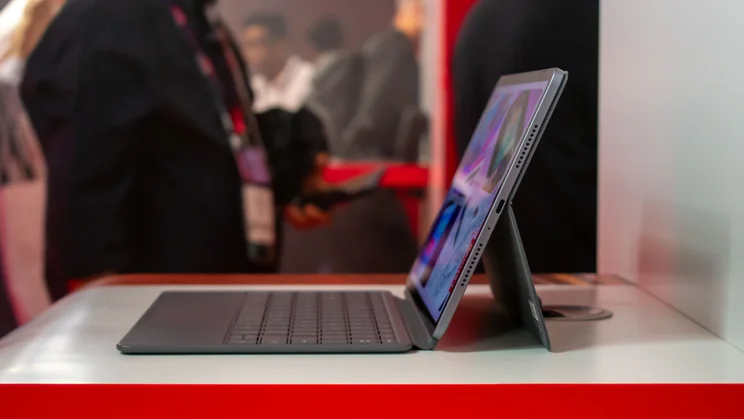
Rounding out the internals is the Silicon-Carbon battery – and this part is a little confusing. Si-Ca cells are becoming increasingly popular in mobile tech due to their ability to offer high capacity without taking up too much space or adding too much weight.
It’s odd, therefore, that Lenovo has gone with a relatively low capacity of 8,860mAh for the Yoga Pad. The Snapdragon 8 Gen 3 has impressed me with its power efficiency before, and Lenovo claims the tablet can stream YouTube for up to 12 hours, so it could well be that this combination still offers excellent battery life. We’ll have to see when the time for testing and reviewing comes. Charging, at least, is nice and nippy, supporting up to 65W.
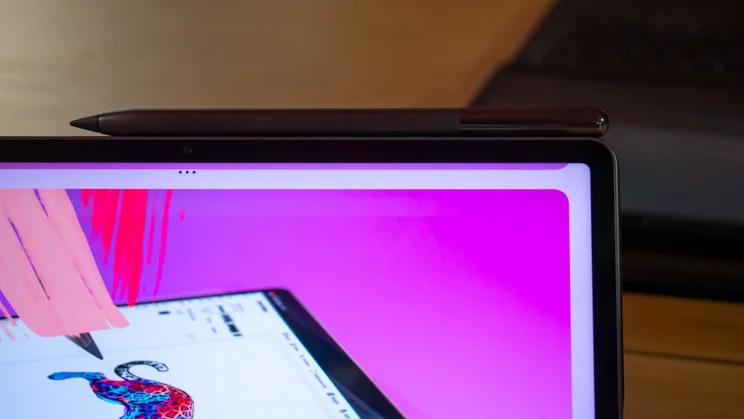
Also potentially peculiar is the lack of stylus bundled with the Yoga Pad, despite so obviously being intended for use with one. The Lenovo Tab Pen Plus is only £21 at the time of writing, so not a massively expensive additional investment – but in the same breath, if it’s so cheap, why not just bundle one in for convenience?
Finally, on the connectivity front, we have support for Bluetooth 5.3 and Wi-Fi 7, with a USB-C 3.2 port on the right edge and three-point Pogo pins on the bottom for attaching the optional keyboard case.
Lenovo Idea Tab Plus hands-on: Design, key features and first impressions
Moving on to the Idea Tab Plus, we see a larger 12.1in LCD display with a lower (but still nicely sharp) resolution of 2,560 x 1,600 and a peak refresh rate of 90Hz. We’ve got the same 800 nits peak brightness and a respectable 96% coverage of the DCI-P3 colour space.
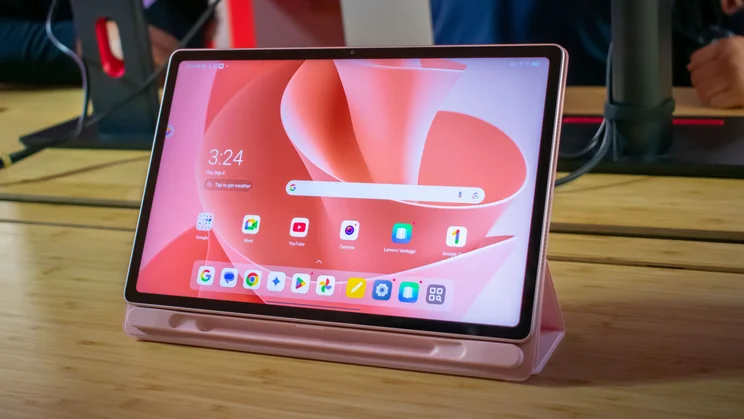
Considering its bigger display, it comes as little surprise that the tablet’s footprint is larger than the Yoga Pad, too. The Idea Tab Plus measures 279 x 181mm (W x H), with the same 6.3mm thickness as its little sibling. That’s for the Wi-Fi only model, however – the LTE version that supports 5G is 6.5mm thick. Both versions weigh the same 530g.
The processor is a MediaTek 6400 chipset that can be paired with up to 12GB of RAM and up to 256GB of storage – again implying the existence of an 8/128GB entry-level model. The battery is a little larger than the Yoga Pad’s, at 10,200mAh, but charging is slightly slower, only going up to 45W.
Connectivity is fine but again a bit weaker than the Yoga Pad: unsurprising, given that this model is quite a bit cheaper. The USB-C port is version 2.0, so data transfers won’t be as fast, and wireless support only goes up to Wi-Fi 5 and Bluetooth 5.2.
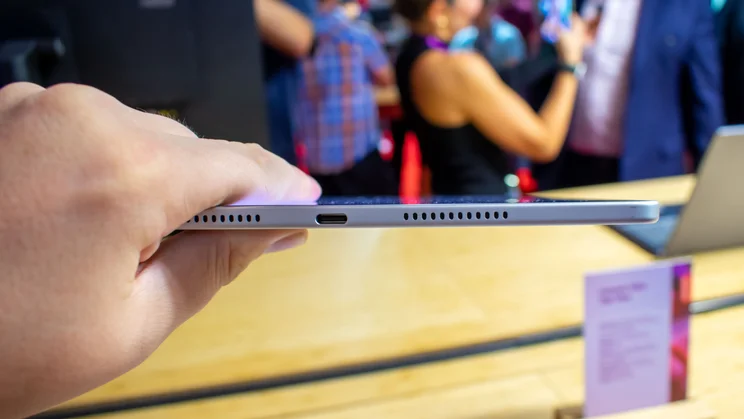
We have plenty of AI features here, too, focused on productivity. Included are Google’s Gemini assistant, Circle to Search and Lenovo’s AI Notes, which can help to simplify or spruce up your notes, as well as summarising other content for quick digestion.
And just like the Yoga Pad, you can pair this with the Lenovo Tab Pen Plus, as well as the standard Tab Pen, and a keyboard case. There’s also a simple folio case that doubles as a kickstand and includes a handy divet for storing and charging your stylus.
Both tablets are due this month – we only have a release window of September 2025 currently – and come in a range of colours. The Lenovo Yoga Pad is offered in either Luna Grey or Seashell, and starts at 499€, while the Lenovo Idea Tab Plus comes in Luna Grey, Cloud Grey or Sand Rose, and starts at 299€. UK pricing is still to be confirmed.
I’ll be getting my hot little hands on both models in the near future, so check back in soon to see what I make of Lenovo’s latest tablets.




